For such a large dragon and such a big loss giving up any side, I feel a human would almost certainly opt to take the ko. And for black to invest so many moves setting up a kill, I also feel black can not afford to back off either.
The question is how would the ko progress? I seriously have no idea. There are quite a bit of local threats as well as the whole right side for white, and quite a bit of local threats for black and some on the lower left. It's really up in the air and hard to judge (and their value also quite hard to judge). White can not afford to lose this ko though, but it can possibly switch to other ko as well.
That much I gather, dig and clamp (K8 H8) what is the main line from the AI (bK8 wK7 bH8 wG8 bG10, it leads to a ko right?) AI doesn't always find ko variations easily and often not that good when the winrate is far from even (although the point difference might still within human, especially amateurs range, like +- 10 points going into yose)
The thing is that if it becomes a ko, white doesn't actually have to save both sides, but can leverage that and make an exchange for the whole upper right black group. I haven't counted, but feels like roughly an even trade. And we are back to count the ko threats if black didn't want to sacrifice the upper right and continue the ko. (or if it is not an even trade? and we are up to yose)
From the last black move, I assume it has something to do with the whole center white group's life and death. I haven't read it out, but looks like it might eventually be a ko in the center (very big ko)
Hmm, from I remember, black seems to be able to play bN8 after the bO8 bO7 (if white choose to play wL11 bK11, wK12 to cut off the black (or if white doesn't respond locally, black can just easily connect back, and white is already too far behind)
If white doesn't choose to take the 3 black stones after the bO8, bO7, bN8, and choose to continue to push P8, black can just block with P9. White has to connect M8, and black can play L10, and white cannot connect M9 (or black connect N5 the whole white group dies). And white would have to capture with N5, black can throw in M9, wN9 capture, bO9, white again cannot connect M9, or bO4 kills all. Hence, the only option for white is to play O4, and black would be able to kill all the M10 white group stones. (this is effectively connect and die problem, and the commentator that day, along with Fujisawa I think, all read these out)
Hence, the best option to keep that M10 group and minimize the lost is to play N5 to capture 3 black stones first right after black K14, and let black to cut off the two K15 K16 white stones (Fujisawa had the chance to save those two stones before, and the game might go into yose, but she played H15 and allow Ueno to push and cut)
A plan to create a swarm colony and eusocial behaviors using multiple cell lines

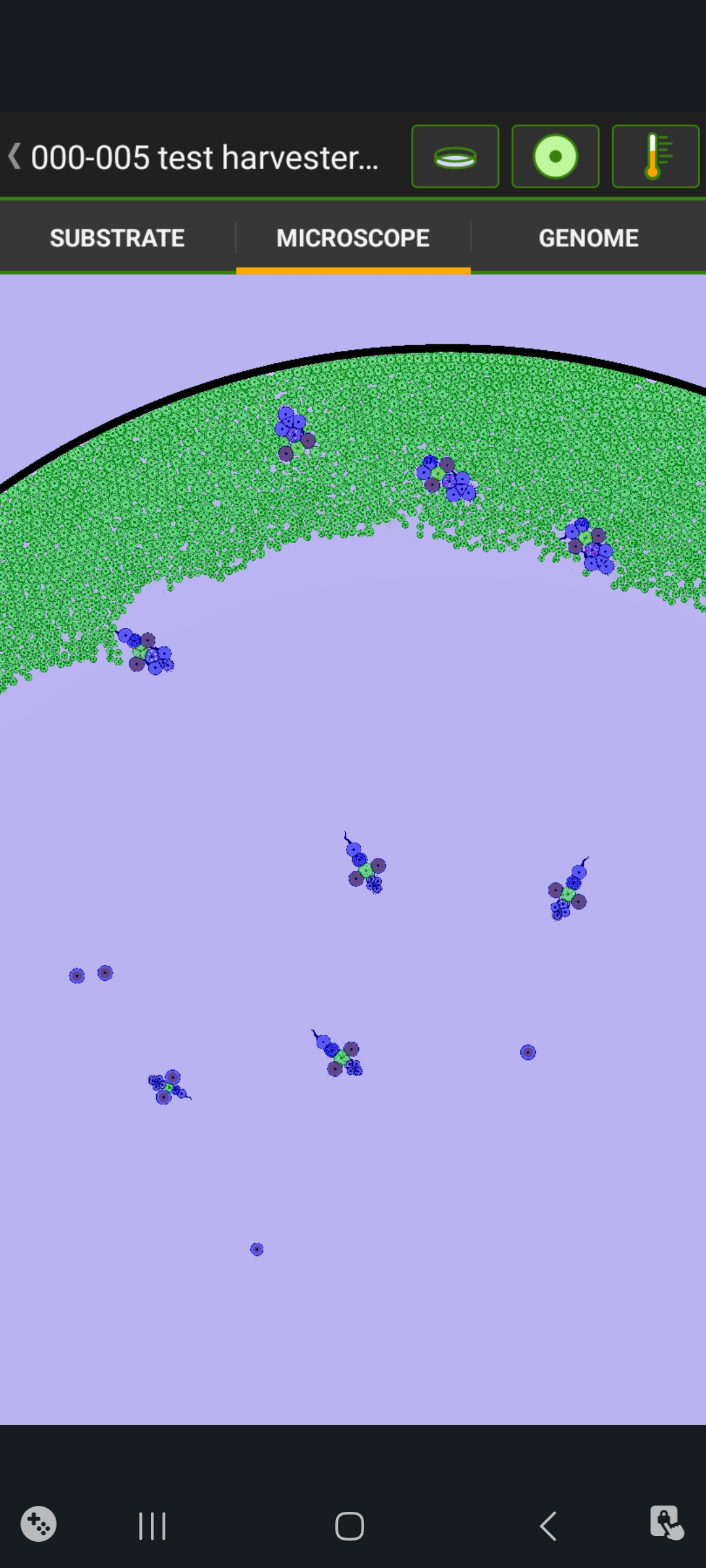
I think I have a plan of borrowing my printing head design ideas to merge multiple cell lines into a truly massive swarm.
The idea is simple, instead of cramp them all into one, we create each cell line for their individual functions
- harvesters/worker drones that would go out to harvest plants (swimming out in all directions to find the plant harvesting area of light, and when energy storage lipocytes are sufficient, grow a light aversion senseocyte to return to the home base in the dark side). I have some "pheromone" ideas, but they are not as robust and simple as this
- Patrols/soldier drones, those follow the worker's color/signal. Which might be a way of "depositing" pheromone color cells. Since they wouldn't feed themselves, so they will eventually die, and if we time their life span just right, we can make them only last a distance less than from the home base to food source. Their corpses will leave a trail of food when them pop, and many allow the worker to follow, and not just blindly search the light source.
- Nanny drones that use secrocyte to either provide the signals to bring egg in the form of stemocyte into the next larva phase, and would devour the harvester's lipocytes for energy, and even collect and group the leftover lipocytes connected with keratinocyte near the queen (attracted to both the lipocyte color and the egg colors)
- Caretakers with secrocyte that can produce protease to consume the "protected lipocytes food storage" and sacrifice themselves or burp the food to the queens (or this can be done by a variation of nannies that act as living food storage themselves, by converting keratin protected lipocyte into direct energies where they can be glued to the queen)
- And finally the queen itself, essentially a variation of my print head design that glue the starting stemocytes to the "birth channel" which will create each drone caste (instead of printing a string). The senseocytes can use colors as the activation, instead of S1 to S4 signals, hence the queen's "control" can be done behind an enclosed "brain" (which again can be a different cell lines, so we have even more cell modes to work with). And the larva growth pad can even be the extension of the birth channel just outside the funnel, and attract larva, with constant burping of food particle. Or the larva can also swim to and be glued to the growth pad, where another version of the caretaker drones "provide" the food.
In terms of drones, I think beside the pheromone mechanism and the caretaker mechanism I haven't fully resolved, the others are definitely doable, or been done before.
The most difficult part of this, might be the brain state control. Effectively, we need a control and detect mechanism for producing different number of internal "color state cells". The number of drones in each caste depends on a lot of factors, obviously when the food lipocytes are low, we need to produce more harvesters (or when the queen haven't "seen" caretaker drones near its feeding heads, more caretakers and harvesters will be "printed". Or sensocytes near the growth bed that detect the nanny dronee, and when they died or leave the area too far, indicating too few nannies to print. The patrol drones are harder to control, but not necessary needed if we don't use them, or just print a certain ratio of them related to the harvesters. The issue though is that these detection areas might be quite far from the internal brain color state area, and how to relay them effectively. Or do we need some internal "messenger drones" that travel between sensing areas and the brain receptor?
Another final question is that do we have enough cell count to scale up to this level. Individual parts and drones definitely would work, but I think around 10000 cells, the lag would start to get very troublesome. Each drone might be about 10 cells each, and the energy required to travel on a large substrate (maybe 5mm? even 6mm?) for room to set up such complex queen (and the nest) will be enormous. Harvesters need to be very efficient in travelling and transporting, and there will be a limit for how many cells the queen can sustain. (but in the early development we might have to compromise, and glue some photocytes and turn up the light for energy, just to demonstrate that this could work in principle)--
The scoring of the 4th game for the 78th Honinbo title match

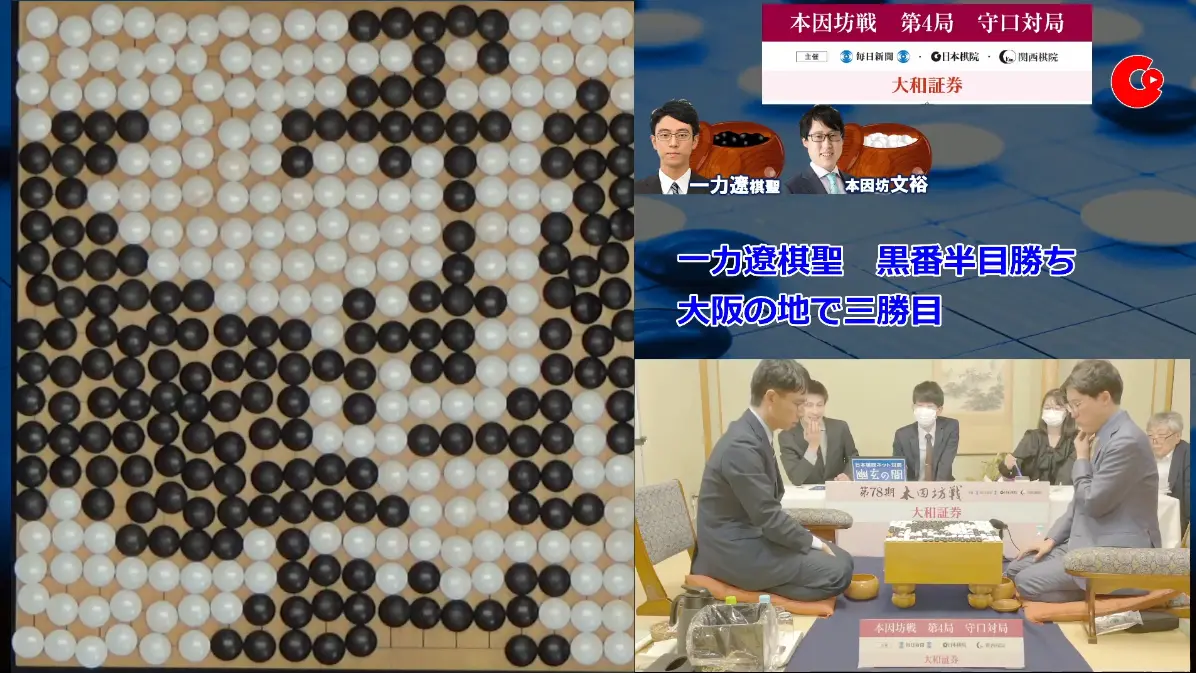
Besides this being a news for Ichiriki Ryo now had a lead of 3 to 1 against Iyama Yuta (just 1 more win to get the Honinbo title), the scoring of this game also showed a quite rare situation, when they played more than 361 moves (total 364 moves for this game). One side completely filled up during manual scoring, and had to count stones off the board.
In the case of this game, it was filled to one side with 4 space left on the board for black, and 3 extra white stones off the board, hence 4 vs -3, so black win by 0.5 in the end { 4 - (-3) - 6.5 komi}. (If you found odd that the total count are 360 stones, but there are 364 moves, it is because they run out of stones, so they had to exchange two prisoners during the final dame filling phase in order to finish the game)
The sgf record can be found here http://eidogo.com/#Pbj2YrFZ:0,364
BTW, this is also a game where the Japanese rule and the Chinese rule give different results. With 6.5 komi, the Japanese rule gives B+0.5, but with 7.5 komi in the Chinese rule, it is W+0.5 (or W+1/4 子 with Chinese half counting of total 184 black area => {184 - 3.75 - 180.5 = -0.25}). Also notice, this is not solely because the Chinese rule has more komi, but more to do with white plays the last move. In games where black plays the last move, the result might be the same (cases with seki and how the last ko is filled can raise more tricky situations and differences).
When teaching fundamental classes, we would use 9x9 for those who just got introduced, easier to show life and death and simple local situations (even ladder doesn't need to run far). And most simple tsumego can fit on 9x9 easy.
But we would switch to 13x13 by the time of beginner's class (30k) where more concepts can be easier introduced and understand it is not just about fighting but positions, and then 15x15 to more "advanced" starter classes (starting kyu 初級, about tdk 21kyu to 25kyu) for practice which whole board situations would start to make sense. And finally switch to 19x19 when they are about ddk (16k to 20k).
Mind you thought this is for kids' Go class, not for adults. There is something can be said about teaching adults starting from a larger board, like 13x13. Or just starting from one corner (one quarter) of the 19x19 board, without switching to different boards. And they would get a more intuitive concept of local and whole board positions (like they are playing four 9x9 games on a 19x19, just open toward the center, and you don't have to win them all to win a game, losing a battle can still win you a war)
Yes, 圖 is a very general word, not just for weiqi. It means anything that can be shown as "image-like", anything that you can draw. For game record/kifu we usually use the word 譜 or more specifically 棋譜 (in fact this is how the word kifu came from ki = 棋, fu = 譜). But you can also use a more general word to describe a kifu showing as an image (i.e. 圖). And in ancient time, this word would generally mean a game position.
You can also use more descriptive adj words to narrow it down, like 變化圖 (which would means variations image/diagram), what's important is the adj words before it, not the word 圖 itself that describes the meaning. (like 布局圖 opening diagram -> fuseki). But adj in general can be "omitted", hence we can write 圖 1 (diagram 1) 圖 2 (diagram 2) instead of using the whole word 變化圖1, 變化圖2 (if we already know the context is about variations).
If you want to translate it accurately, you need the context within (or even before and after) a paragraph in order to get its precise meaning.
AI hallucination on real life game
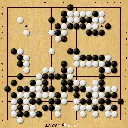
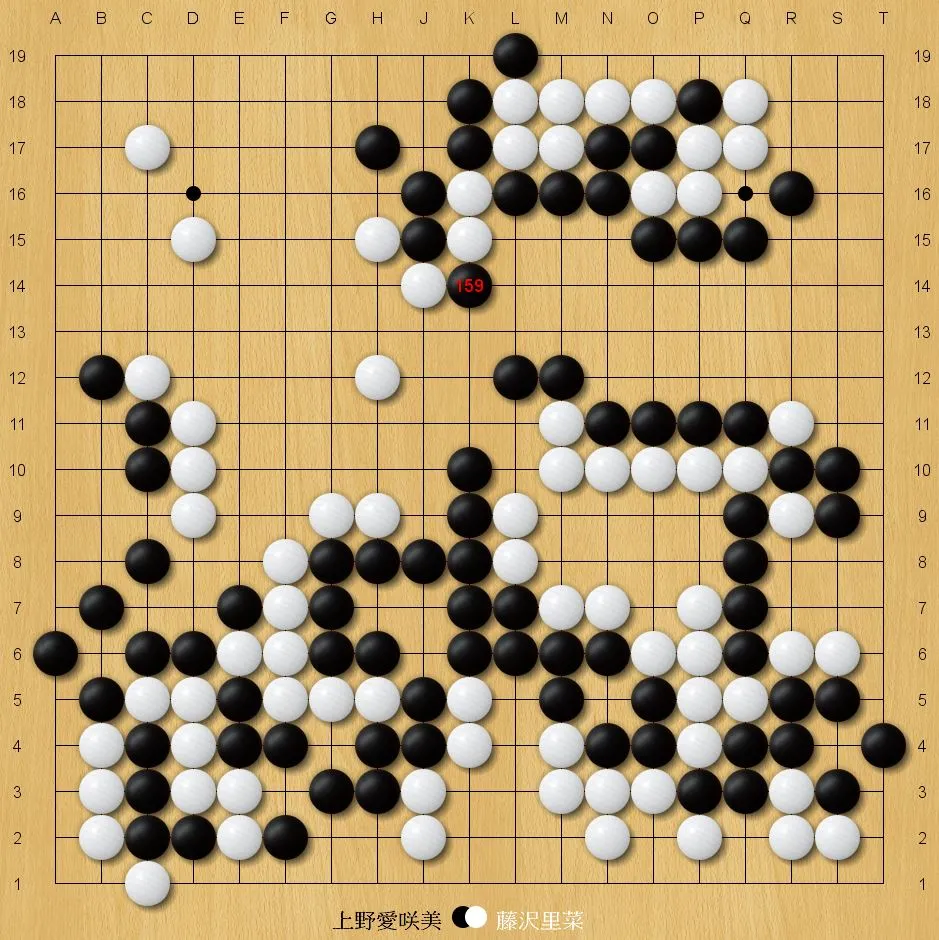
This is a game played on June 19 between Ueno Asami (as black) and Fujisawa Rina (as white). At move 159, Asami cut with K14.
It involves a followup of the life and death of the white group M10, and most human players would be able to judge it, but AI (from Golaxy to Katago) all seem to deem it "alive" and continue to fight without securing the life of that group first. While a human player can read out the sequence like Rina did during the game and make the right choice.
But it takes like 10k+ playouts before AI realize the K14 cut is a very good move, and (with few playouts AI even judges K14 as a blunder). And it takes millions of playouts before AI realizes the M10 white group is in trouble.
What other AI blindspots and hallucinations have you seen in real games?
When you know your exercises have bored the kids
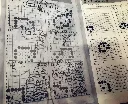
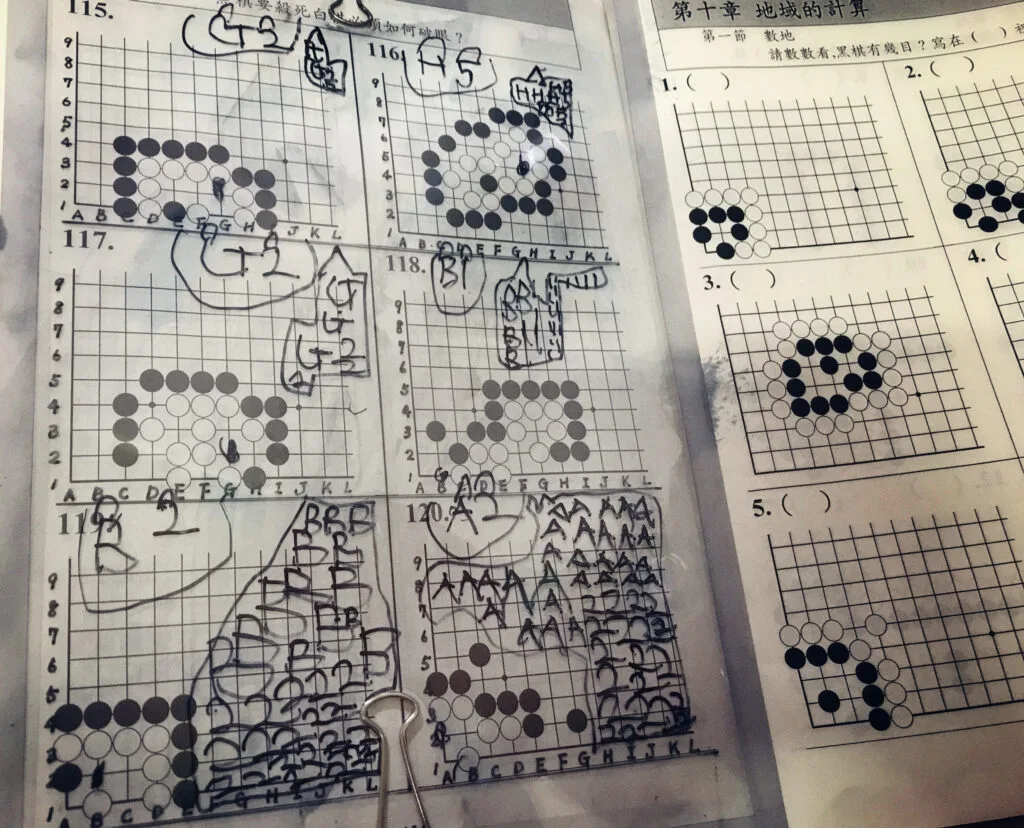
Kids are creative, and smart kids will get bored very quickly, even if repeat exercises are necessary practice for them.
(There is no badukshitposting community on lemmy. Maybe we should accommodate more diverse posts here).
The oldest known drawing/carving of weiqi from the Han Dynasty.
走到文物展品大殿裡豐富的展品,篆刻竹纖,拓片,工藝品等等。找到負責的經理,問起圍棋畫像石,不但沒有拓片,回答和老師傅一樣,不知道沒見過。
I've heard of the "carving" about weiqi, but never actually saw it, or even saw a picture of it till I start researching the history.
The report in the link was written by the head of the Luoyang Weiqi Museum, so I am farily confident the authetisty of the pictures she took. And I will make a brief translation and introduction below:
First of all, these carvings are called 畫像石. a very specific styles of carvings used in the Han Dynasty China (the 2nd century BC to the 2nd century AD). So very high confident it is of its time.
Here are the overall picture of the stone the carving is from
The dimension is 254 cm in length, 85 cm in height, and 26 cm thick, weight more than 1000 kg.
We can see other recreation activities next to the "博弈", people were dancing and playing some kind of instrument (likely some kind of drum, or bell).
There are other carvings of some daily activities in the back of the stone as well
In the close up shot, we can see there are two types of game boards carved on the stone, one is Go in the front, and another smaller board on the side, called 博 (where only recently we've uncovered the actual game board for it), and Go has been associated with it for a very long time - "博弈". We are certain they were both quite prominate during the Han Dynasty (probably more for 博 than weiqi).
Very hard to make out the number of lines on the carving, it degraded quite a bit. But it is for sure more than 9 lines or 13 lines, and on the range at least 15 plus even up to 19. (simply cannot tell for sure, and cannot rule out the original stone worker made it incorrectly to begin with)
The oldest unearthed Go stones from the 1st century AD
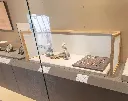

This is from an exhibit at the Suzhou museum last year. The topic of the exhibit is - "Restoration of Peace, the Four Faces of Han Dynasty Civilization", about archeological finds from Han Dynasty China near Suzhou.
The stones are made of a type of glass and not necessary "black and white" but blue and slightly yellow white. (or they might have been darker and lighter, but the colors degraded or changed over time). It was found in a tomb of a Han dynasty high royal prince. They didn't find a board, but a cloth with lines drawn on it and too degraded to know how many lines it was.
So it is possible that we didn't find many old game boards (or older than Han dynasty), not due to out of luck (or as some suggested Go was invented in Han dynasty), but because ancient players faced the same issue we are, and find it impractical to carry giant wood or stone slaps as gobans, and chose lighter materials like cloth or leather and draw grid on them as the board. Much cheaper and easier to produce.